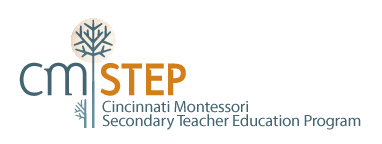Old Testment/Jewish Studies Field Study Guide and Rationale
Religion/Cultural Studies
Junior High
Denise Pecha
Field Studies expand children’s learning through active hands-on experience with the rich resources of the local community. Field Studies increase student knowledge and understanding of a subject and add realism to the topic of study. “…the child needs wider boundaries for his… experiences…” (p. 9), “…it is necessary for us to provide him with culture and to enlarge his social experience…” (p. 17), “when the child goes out, it is the world itself that offers itself to him. Let us take the child out to show him real things…” (p. 34) “…the outing is a new key for the intensification of instruction ordinarily given in the school” (p. 35). Maria Montessori, From Childhood to Adolescence, pp. 34
For the semester- long Old Testament and Jewish studies field study, I will refer to Maria Montessori and her instruction on how to approach the social sciences. “The history of civilization is a history of successful attempts to organize work and to obtain liberty.” Maria Montessori, Dr. Montessori’s Own Handbook, p. 188. This field study accomplishes this in a particular way through an in depth look at the history of an entire nation, from its beginnings through its first 2,000 years of existence. We will explore in detail their culture, beliefs, sufferings, joys, captivity and freedom. We will learn their personal stories, successes and failures as a people. We will experience and discover their rituals, customs, music, food and art. This discovery will lead us to a greater appreciation for the differences that make us unique, the challenges we face that prompt us to search for meaning and purpose in our lives and the ultimate unity that defines us as a human family.
Maria Montessori also discusses the importance and necessity of movement and first hand experience within the field study. The students creation of the Bible Lands Museum exhibits and artifacts are a critical and necessary component of the field study during this sensitive period of their development. “A child must acquire the customs prevailing in his environment. This is why he must have an opportunity to exercise himself in them. It is not enough that he see what others do. His movements are not those of a machine that only has to be regulated; they are rather those of a mechanism that has a definite task to fulfill. Motor activity, therefore, must have a goal and must be connected with mental activity. There is a close relationship between movement and the desire to learn.” Maria Montessori, The Discovery of the Child, p. 305.
